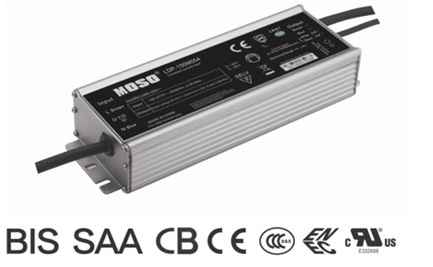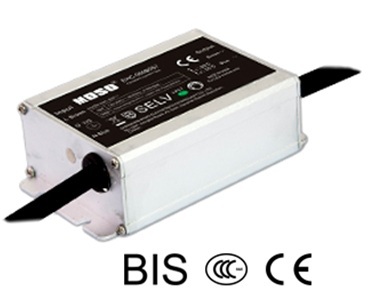Consumers of home audio have an old idea that the bigger the device, the better, and the most powerful system should even make the porters feel guilty. But a new generation of audio equipment, DVD players and integrated home theater systems are replacing these behemoths.
A new generation of audio and video (AV) players with digital amplification is becoming smaller and lighter than ever. The digital amplification technology from the switching power supply can increase the efficiency by 94%, thus eliminating the metal heat sink usually associated with the output stage of the power transistor. As a result, manufacturers can package a 50-watt stereo TV in a plastic case with a liquid crystal display and create an integrated DVD player with AM-FM radio, Dolby Digital and DTS surround sound decoders.
Multi-channel audio systems implemented by digital amplifiers include automotive entertainment systems and home theaters, which, according to market research firm Forward Concepts, will enable shipments of audio amplifier channels to exceed 1 billion between 2004 and 2006.
At present, the entire six-channel home theater audio playback system costs only more than 100 US dollars, so some audiophiles are worried about the sound quality. The fact is that "Class D" digital amplifiers require well-designed filters. The filter components (inductance and capacitance) may be as large as the metal heat sinks that the digital amplifier is trying to eliminate, but omitting them will have a serious impact on the sound quality.
As a result, semiconductor suppliers of Class D and other types of digital amplifiers are positioning their products based on their filter design capabilities. In any case, these vendors are willing to minimize the complexity, quantity and price of external filter components for their potential customers.
For example, companies such as National Semiconductor and Maxim are focusing on developing low-power products such as headphone amplifiers for cellular phones and PDAs. Such handheld devices require a class D amplifier with excellent power savings and a minimal filter, and the loss in sound quality is largely unnoticed by the user. In addition, a few companies are trying to completely eliminate filter design problems. Their typical representative is D2Audio, which is mainly for high-end consumer products.
Some semiconductor manufacturers, such as Tripath Technology, TI and Apogee Technology, are pushing high-power amplifier components for the mass consumer market. In order to minimize the need for external filters, these manufacturers are using "zero crossing", spread spectrum and other noise reduction techniques. Cirrus Logic also announced that it will enter the market, although its Class D product line has been focused on low-power headphone amplifiers.
Filter design
   In operation, the digital amplifier carries the audio signal using the width and frequency of a digital pulse train (ie, pulse width modulation). The pulses are generated by the comparators which match the level of the audio signal. Therefore, a high-amplitude, high-frequency signal is represented by a cluster of dense short pulses, while low-frequency, low-amplitude signals are represented by longer, sparse pulses.
An audio signal can be generated by inputting a digital pulse train into a pair of MOSFET power transistors. Typically, the pair of MOSFET tubes are connected in a push-pull mode. The additional inductor-capacitor filter and the speaker coil itself extend the "sustainability" of the signal, effectively smoothing the pulse.
Transistors are not natural amplifiers, they are switching devices. In order for the transistor to function as an amplifier, as with a conventional class AB amplifier, a bias current must be applied that forces the transistor to float forever in the region between full and full off. This means that the transistors of the Class AB amplifier will sink current and thus generate heat, even when there is no audio signal.
Acoustic equipment manufacturers have known that many types of power transistors exhibit the best linearity characteristics when "thermally biased", that is, they turn "on" when they are applied with sufficient bias current. . This makes the power transistors feel very hot, and there is no doubt that these high-end Class A amplifiers need to be equipped with a dozen kilograms of aluminum heat sink.
In contrast, digital amplifiers can use power transistors more efficiently. Pulse width modulation can control their on or off, and does not require much time or power during the switching process. Therefore, in a Class D amplifier, the chain of PWM, driver stage and power transistor output is significantly shorter than a multistage Class AB amplifier.
The problem is that the output of the audio amplifier must be carefully filtered to prevent residuals and harmonics in the digital pulse train. This forces semiconductor suppliers to engage in the filter design business, but no one can guarantee that their customers, consumer electronics manufacturers, will adopt their reference designs or follow the recommendations of semiconductor manufacturers. Therefore, if the end user is dissatisfied with the sound quality of a home theater system, he is likely to blame the semiconductor supplier, despite the fact that this may be caused by a filter failure.
Tripath was one of the first companies to address filter issues. By using an variable frequency sawtooth oscillator to spread the pulse into an area of ​​approximately 1 MHz, it effectively reduces the complexity of the required filter network. This form of spread spectrum technology is called T-class by the company. For example, Tripath found that electrolytic capacitors used with 250kHz switches can be replaced by smaller, lower-rated capacitors, as long as the switch operates from 600kHz to 1.5MHz.
Tripath offers discrete low power (approximately 10 watts) amplifier chips, integrated amplifier drivers up to 70 watts, and 150 watt/channel assembly modules. For example, the company's TA2024 dual-channel (15-watt/channel) amplifier can drive Sanyo's 42-inch plasma display TV and 30-inch LCD display TV and JVC's 26-inch HDTV. The 90 watt/channel TA2022 has been used in Sanyo's 5.1-channel DVD player.
In fact, Tripath claims to have shipped 25 million channels. Currently, its customers include Aiwa, Apple Computer, Denon, Hitachi, Motorola, Onkyo, Samsung, Sharp, Sony and Toshiba.
TI also said that its design wins include Samsung's DVD hybrid player. Sanyo is using TI's chipset, which consists of the TAS5026A (a six-channel PWM) and the TAS5110 (a 50-watt digital power amplifier). The discrete stereo half-bridge (H-bridge) driver TAS5182 extends TI's digital amplifier power range to more than 100 watts.
But the complexity of the filter may be the only fatal weakness in digital amplifier design. By shifting the timing of the negative pulse at the zero crossing, TI believes it can eliminate many of the audible harmonics associated with Class D technology, thereby significantly reducing the required filter. Whether it's good or bad, Class D amplifiers become "filterless" products, such as TI's TPA2000D1 or Maxim's just-introduced MAX9700B, which is designed to be a low-power product for cellular phones or PDA headphone amplifiers. Even so, such devices cannot completely eliminate the capacitance.
With the help of DSP
   What makes TI unique is the insertion of a DSP into the digital amplifier processing chain. In TI's original concept, the role of the DSP was to convert a pulse code modulated signal from a DVD or compact disc into a PWM signal used by a digital amplifier. This effectively bypasses an A/D conversion stage. But it quickly became clear that the use of DSP can effectively shape the pulse stream before the amplifier, making the filtering of the back end easier.
In fact, its competitor Apogee Technology used this pulse shaping technique to generate a "damped three-state" pulse-width modulated timing signal. This algorithm is used to control the switching of power transistors in a full bridge configuration. A simple passive low-pass filter can be used to remove high frequency components from the PWM pulse train before the signal passes through the audio speaker.
Tripath also uses a form of DSP, the ∑-Δ A/D converter, at the front end of its audio amplifier module. The sigma-delta converter reconstructs a 44.1 kHz audio pulse stream as if it were sampled at 12.5 MHz (256 times 44.1). This oversampling effectively smoothes the audio amplitude into a 1-bit+symbol digital stream, making it easier for the digital amplifier to process. Oversampling also increases the position of the quantization noise and harmonics in the spectrum, making it easier for capacitor filters to eliminate them.
MOSO Public LED lighting Driver is a IP67,
constant current design for Public lighting application like street light,
tunnel light, Flood light, Stadium Light, etc. This Public LED lighting Driver
has brilliant waterproof design and universal input voltage range that ensure
this LED control gear to be suitable for all of outdoor application use.


The Public Lighting LED Driver got global safety certifications, including UL, CE, TUV, CB, ENEC,SAA, BIS, KC, PSE, etc. The LED Driver has universal input voltage, from 90~305Vac. It is a reliable product compatible with various application and different countries.
The high efficiency of these Public lighting LED Power Supply and compact metal case enable them to run cooler, significantly improving reliability and extend product lifetime to at least 50,000hours.
To ensure trouble-free operation, protection is provided against built-in Surge protection, output over voltage, short circuit, and over temperature.
MOSO grants the product with 5 years global warranty. Customer can refer to Warranty policy, find the closest MOSO distributors or sales representatives, to get a local replacement in case of any failure.
Public Lighting LED Driver
Public Lighting LED Driver,LED flood Light Driver,Outdoor Waterproof Lighting LED Driver,Professional Public Lighting LED Driver
Moso Electronics , https://www.mosoleddriver.com